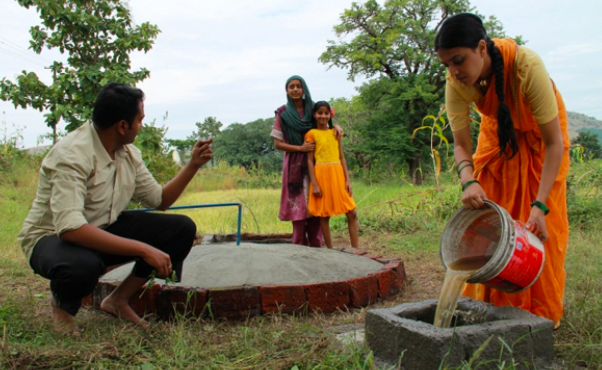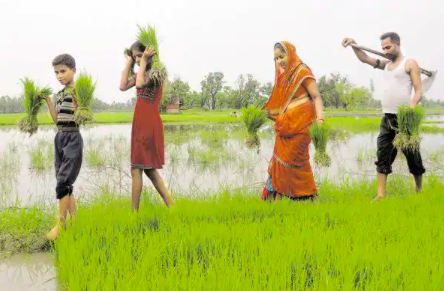The new Pradhan Mantri Fasal Bima Yojana is a new-age crop insurance scheme that is aligned with the vision of the One Nation One Scheme. While it includes the relevant and eminent features from preceding schemes in this area, the Fasal Bima Yojana actually manages to remove the inadequacies and weaknesses, replacing them with clear, concise, and pertinent clauses. The PMFBY, therefore, will replace two existing schemes viz. The National Agriculture Insurance Scheme and the Modified NAIS. Briefly discussing the objectives of PMFBY, the scheme is directed towards:
- Providing monetary support and insurance to farmers in case any of the notified crops fails due to disease, pests or natural disasters, or calamity.
- Ensuring that farmers are able to maintain continuity in their farming practice and providing a sense of stability in their income.
- Encouraging and assisting farmers to move to modern and innovative agricultural practices.
- Ensuring credit flow into the agriculture sector.

The PMFBY covers all the farmers who are involved in the practice of growing notified crops within a notified area in a certain season. Therefore, any farmer having an insurable interest in crops as per the said parameters is covered by this scheme. Further, in order to better deliver the promise of this scheme, the scheme has been made voluntary starting the Kharif season of 2020 for all the farmers. Such voluntary coverage can be obtained by all the farmers who aren’t mandated to be enrolled in the scheme, and the voluntary enrolment option will extend to Crop KCC/ Crop Loan Account Holders who have not had their credit limit renewed.
The mandatorily enrolled persons (as per prior to Kharif 2020) include:
- Farmers within the notified area possessing a KCC accounts/ Crop Loan Account with renewed or sanctioned credit limit for such notified crop during the certain season.
- Farmers so included by any directives issued by the Government.
Highlights of Pradhan Mantri Fasal Bima Yojana
Looking at some of the key implications and provisions of the PMFBY scheme, here’s a gist of our observations and understanding –
- Farmers will be required to pay out a uniform and reasonable premium of 2% for all Kharif crops and a premium of 1.5% for Rabi crops. The premium percentages vary significantly for commercial and horticulture crops though – for commercial crops, the payable premium percentage stands at 5%, and the same shall follow for horticulture crops as well.
The premium rates have been kept extremely nominal as a result of subsidy by the government whereby the balance amount that would otherwise accrue to the farmers, is going to be paid by the Government and in case of a triggering event, the entire amount of insurance will be paid out to the farmer, to the extent of loss due to calamities and causes notified.
- The Government subsidy comes with no cap, so to say, if the balance mount of premiums happens to be 90%, the government will bear it, no questions asked. This is definitely a sweeping move in the right direction and is sure to make the lives of farmers much easier.
- Also drawing a contrast from some previous clauses, there was a provision of capping the rate of premium that would be borne by the government. Due to this, the number of claims being paid to farmers was actually pretty low. This capping was essentially instated in order to limit the Government’s liability and keep it well within the stipulated subsidy. With the removal of this capping, the farmers can be assured that they’ll get the rightful amount in claims against the full sum insured, without any arbitrary or wrongful reduction therein.
- Further, this scheme also strives to lay emphasis upon the use and adoption of the latest technology in the space of agriculture and farming. Substantiating this with an example, the usage of smartphones and tablets shall be normalized in order to capture and upload the data of crop cutting so as to reduce any possibility of delays in claim payment to farmers. Further, remote sensing shall be implemented to reduce the quantum of crop-cutting experiments.
- Since this scheme is a replacement for the erstwhile NAIS/ MNAIS, the covered farmers will be excluded from any service tax liability with regard to any of the services related to the implementation of the current policy. It has further been estimated that the average subsidy that this scheme will ensure would fall somewhere in the range of 75-80% of the insurance premium.
Risks Covered Under Pradhan Mantri Fasal Bima Yojana
- With regard to covered risk for standing crops on notified areas, yield losses due to non-preventable or non-foreseeable risks which include natural fires, lightning, storm, cyclone, hailstorms, typhoons, tempests, hurricanes, tornados, etc. are comprehensively accounted for and provided for. Other risks that accrue out of flooding, inundation, landslides, drought, dry spells, pests, and diseases are also accounted for and subsequently covered.
- If adverse weather conditions prevent or unreasonably delay a majority of insured farmers within a certain notified area from sowing or planting, given their clear intention to do the same and bear all investment and expenditure that would accrue, an indemnity claim of up to 25% of the sum-ensured will be made available to the affected farmers and they’d be eligible to claim it.
- With regard to losses in post-harvest cases, a maximum period of 14 days has been stipulated in the scheme for the coverage to be available so long as the harvested crops are kept in “cut & spread” condition in order to dry in the field.
- For other problems that are categorized as localized problems, any loss or such damage that may result due to the occurrence of identified localized risks like hailstorms, landslides, and Inundation affecting isolated farms in the notified area would also be covered.
How to Claim Cover?
- In the case of Prevented Sowing or Planting Risk, the insuring company would usually disburse the claim within 30 days of an order or notification by the State Government. This payout is not affected by any delay that is made by the government in transferring the subsidy amount and is paid out to the affected insured party i.e., the farmer irrespective of when the subsidy from the Government is received by the insurer.
- In case of any risk associated with standing crops and insurance cover accruing therefrom, Joint Loss Assessment along with the Government is conducted and payment is calculated vide the following formula:
(Threshold yield – Estimated Yield) x Sum insured x 25% of Threshold Yield)
The farmer, to be eligible to claim such money is required to intimate the insurer within 71 hours from such happening of the trigger event.

The assessment is done with 15 days of such intimation and the pay-out is done without waiting for transfer payment from the Government.
- Similarly, for post-harvest losses, the farmers so affected are required to intimate the insurer within 72 hours of the happening of such event that leads to the loss or damage in question. A similar stipulation is made for the loss assessment to be done and the claim to be disbursed by the State Government concerned.
- In cases of losses and damage originating out of localized perils and calamities, the process is pretty similar to the aforesaid, however, any losses that originate out of war or nuclear risks, malicious damages, or anything that can be classified as preventable, are excluded from the ambit of the cover.
We hope that this guide gave you a better understanding of the PMFBY scheme. For anything else, do check out our blogs HERE.


